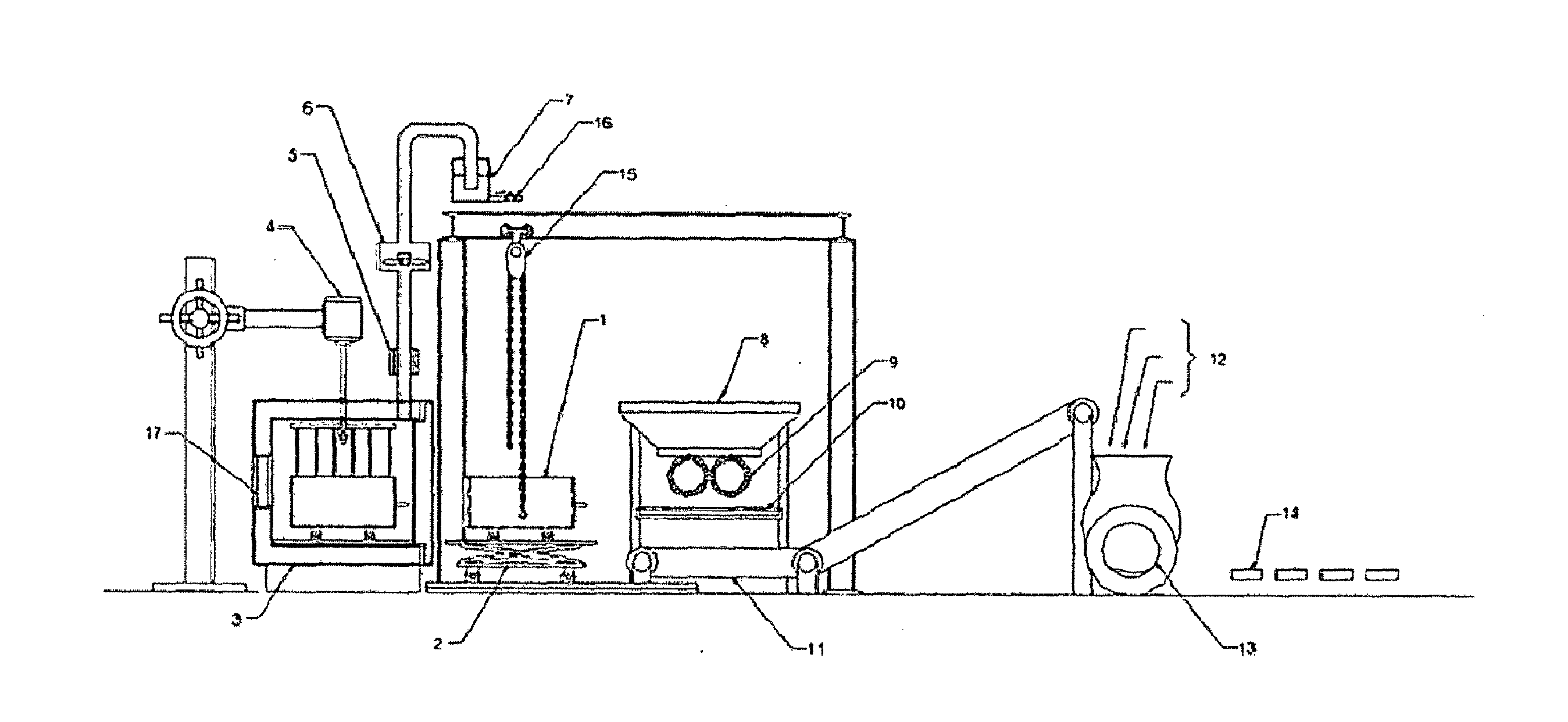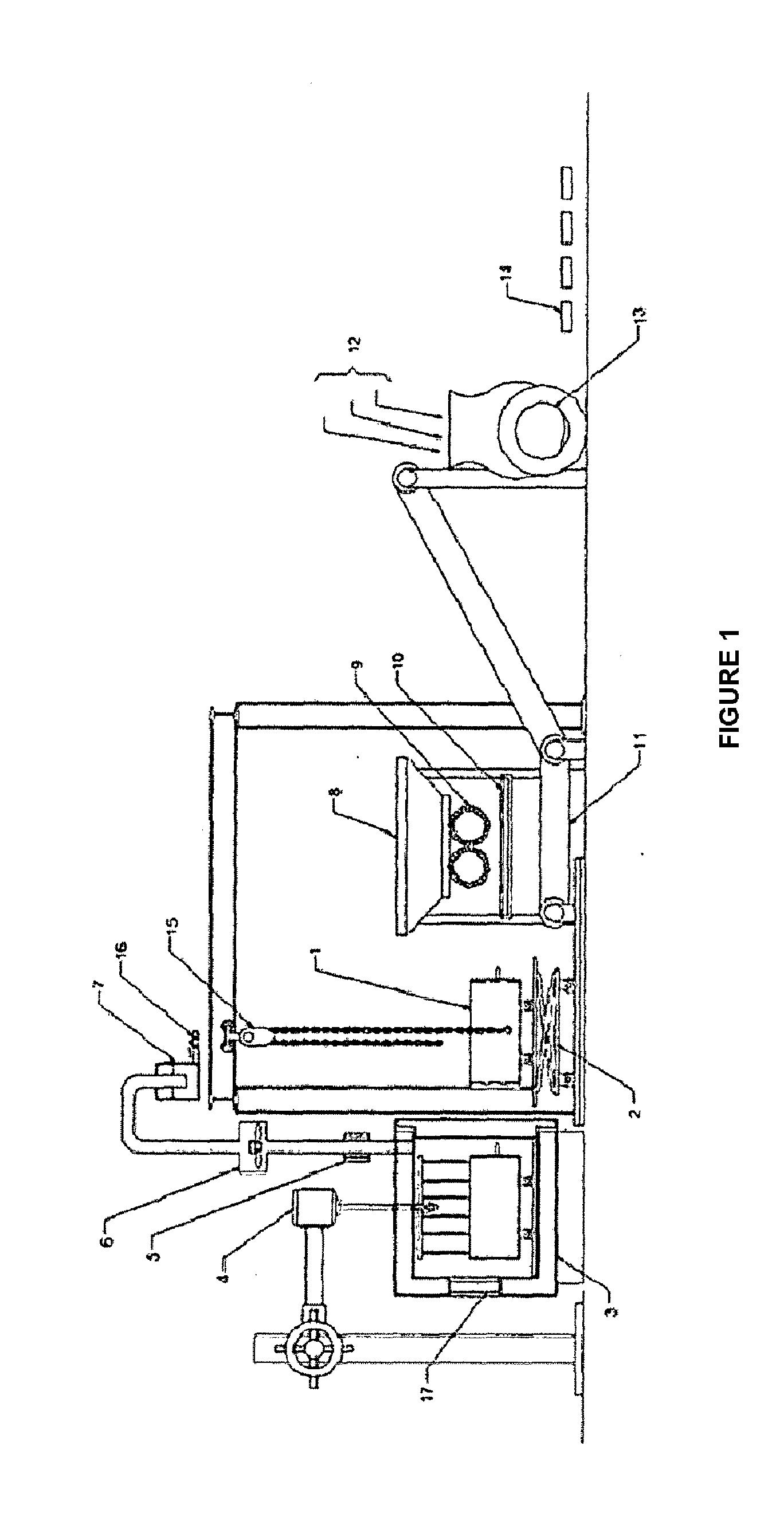Method and Device for Treating Diatomaceous Earth Waste and Other Waste in Order to Obtain Construction Materials
- Summary
- Abstract
- Description
- Claims
- Application Information
AI Technical Summary
Benefits of technology
Problems solved by technology
Method used
Image
Examples
examples
[0019]1) Brick Manufacturing
[0020]Bricks measuring 25 cm long, 12 cm wide and 8 cm thick were manufactured with an average weight of 974 g. Use was made of 33% by volume of diatomaceous earth, 13% by weight of tailings, 10% by volume of volcanic ash, 10% by volume of foundry sand and 34% by volume of binder agent (cement is used as binder). As a result of mechanical tests applied to cubes of 2 inches per side, according to the ASTM standard 170-50, an average compressive strength of 272.3 kg / cm2 was obtained, also the water percent absorption was 17% which meant that the obtained material absorbs less water than specified in ASTM standard 121-48, which has 21% maximum water absorption percentage.
[0021]2) Lattice Manufacturing Lattices were produced whose geometric shape was square with curved vertices and a centered circle with 8 cm diameter, the height was of 40 cm and each side is 25 cm and the thickness is 12 cm. For manufacturing the lattices, we used on average 33% by volume of...
PUM
| Property | Measurement | Unit |
|---|---|---|
| Temperature | aaaaa | aaaaa |
| Temperature | aaaaa | aaaaa |
| Length | aaaaa | aaaaa |
Abstract
Description
Claims
Application Information
 Login to View More
Login to View More - R&D
- Intellectual Property
- Life Sciences
- Materials
- Tech Scout
- Unparalleled Data Quality
- Higher Quality Content
- 60% Fewer Hallucinations
Browse by: Latest US Patents, China's latest patents, Technical Efficacy Thesaurus, Application Domain, Technology Topic, Popular Technical Reports.
© 2025 PatSnap. All rights reserved.Legal|Privacy policy|Modern Slavery Act Transparency Statement|Sitemap|About US| Contact US: help@patsnap.com


